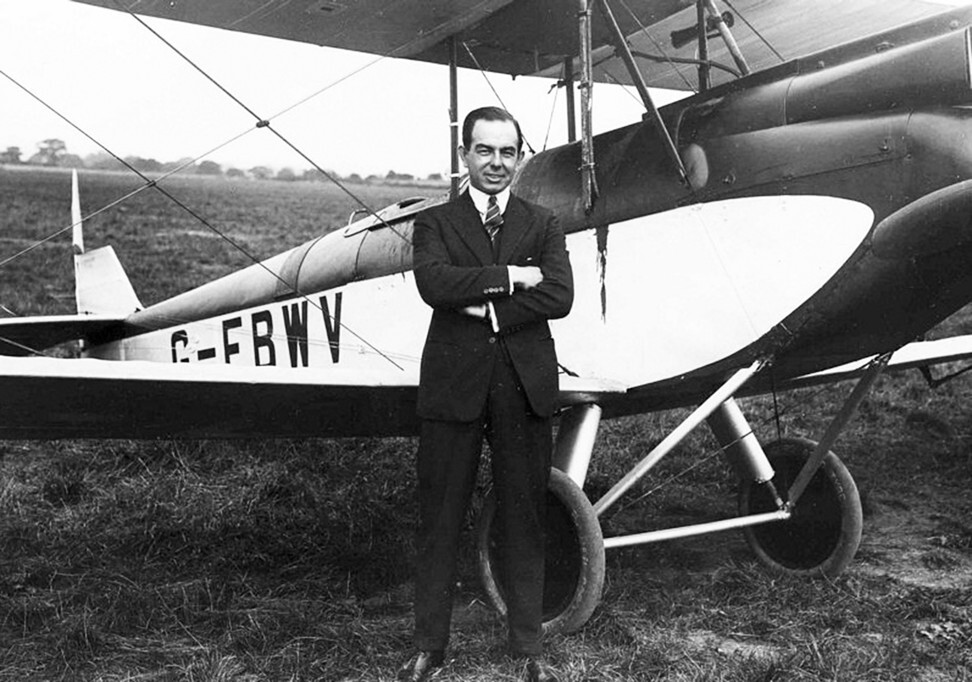
How to read travel guides in a time of coronavirus – wanderlust and more while we’re stuck at home
- Lonely Planet, Fodor’s, Bradt, et al, are making a suitable case for travel-inspired lockdown content
- Plus, remembering two of Hong Kong’s earliest aviators, the Macdonald brothers
Guidebook publishers are taking a variety of stances in dealing with the shutdown of leisure travel.
Lonely Planet’s online shop is still plugging away with a raft of new travel guides and other books such as The Digital Nomad Handbook: Practical tips and inspiration for living and working on the road, and the more lockdown-friendly Global Chocolate Tour. Among the more surprising entries on the site’s top 20 bestsellers for this month are its guides to Italy and Japan.
The Fodor’s website has a good selection of virus-related travel articles, including dispatches from 20 of its locked-down contributing authors. It is “business as usual” at Trailblazer, while Rough Guides is basically just asking for financial support.
Much more proactive is Bradt Travel Guides, whose senior management has recently penned persuasive articles for National Geographic and The Telegraph on why we should all still be reading guidebooks. The publisher is also discounting its entire catalogue – which includes some good travel-writing anthologies – by 50 per cent.
Remembering the Macdonald brothers, Hong Kong’s first aviators

One of Hong Kong’s first aviators, Alexander Macdonald was born at Breezy Point, Mid-Levels, just below Robinson Road, in 1897. He qualified as a pilot in England in 1915, at the age of 17, and joined the Royal Flying Corps at the height of World War I. He was awarded the Military Cross for “conspicuous gallantry and skill” while flying over the Western Front aged just 18, and was shot down and killed, aged 19, on August 26, 1917.
His older brother, Henry Macdonald – also Hong Kong born – survived the war in Royal Navy submarines and took to civil aviation, later becoming a pioneer of transatlantic air travel. In 1928, when his mother, Mary (granddaughter of Lane Crawford co-founder Ninian Crawford), fell ill, he attempted to fly himself from England to Hong Kong, but crashed several times en route and never completed the journey.
Later that year, he set out to fly solo across the Atlantic from Newfoundland, in Canada, from where Reuters filed a report: “Great Britain and America are captivated by the unassuming courage of Lieut.-Comdr. Macdonald, who arrived at St John’s quietly with a small machine and a big idea and embarked on his venture with a minimum of publicity. [He] carries a quart flask of coffee and two dozen sandwiches.”
In 1920, 11 pilots set out to fly from Rome to Tokyo – only two made it
Macdonald’s open-cockpit DH.60 Moth biplane was ill-suited to the task and compared poorly with American aviator Charles Lindbergh’s much more powerful and modern, fully enclosed monoplane, which had made the first solo crossing the previous year. Macdonald took off on October 17 and headed for Ireland.
Reports of the disappearance, possible sightings and probable demise of the colony’s first famous flier were carried around the globe, and made the front pages of Hong Kong newspapers on October 22, 1928.
“Information which reaches us today,” announced The Hongkong Telegraph, “leaves no room for doubt that Lieut.-Comdr. Henry C. Macdonald, DSC, the British airman who is missing on his attempted flight across the Atlantic, is a Hongkong boy.” He was never seen nor heard from again.
Ritz-Carlton cruise postpones maiden voyage

Back in 2017, Marriott International announced that it would become “the only provider of luxury accommodations both on land and at sea” when subsidiary Ritz-Carlton launched the first of the Ritz-Carlton Yacht Collection cruise ships.
Its first vessel, the 298-passenger Evrima, was due to set sail in February, but all voyages scheduled from then to June were cancelled last October, reportedly due to “challenging circumstances with the shipyard”. Then, last month, all sailings from June onwards were cancelled or postponed until April next year, with ongoing problems with the shipyard, in Vigo, Spain, said to be the problem.
At this point, however, the delay is probably a relief, with a ship under slow construction probably being less costly to own than a brand-new one operating with a crew but no passengers (such as Virgin Voyages’ recently launched debut ship, Scarlet Lady, which has been floating just off the coast of Florida for weeks).
With luxury small-ship cruising likely to return before mass-market budget cruising, you can make bookings for a Mediterranean cruise on the Evrima from April 22, 2021 – with a reasonable degree of confidence – on the Ritz-Carlton Yacht Collection website.

